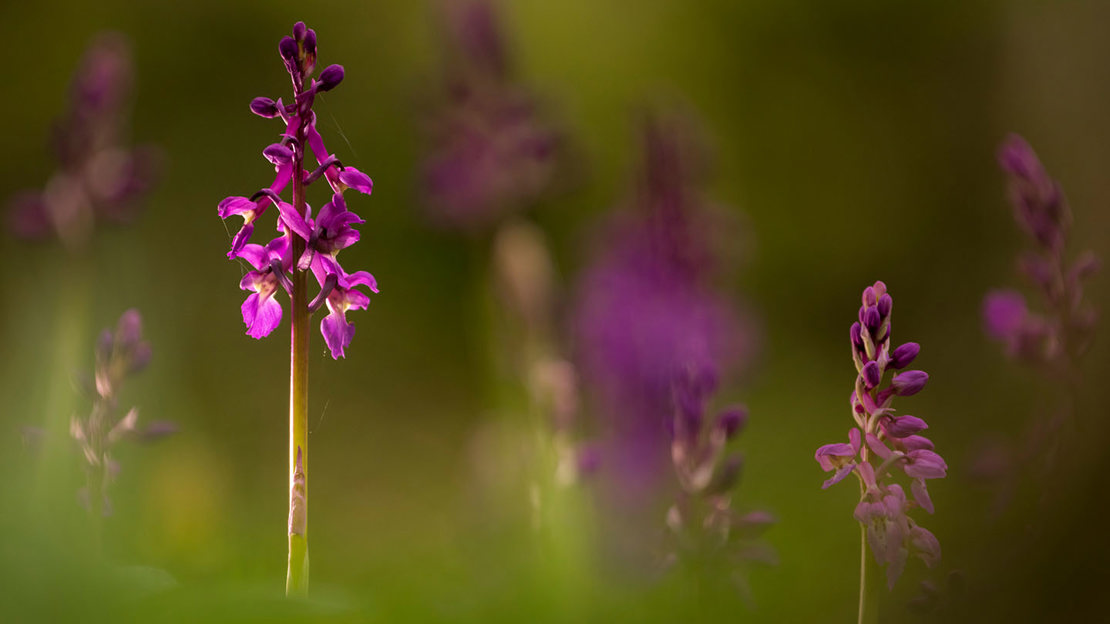Common names: early purple orchid, blue butcher, adder’s meat, goosey ganders, kite’s legs, dead man’s fingers
Scientific name: Orchis mascula
Family: Orchidaceae (orchid)
Origin: native
Flowering season: spring
Habitat: ancient woodland, grassland, hedgerows and road verges











